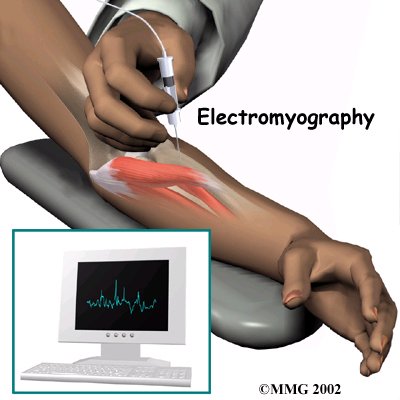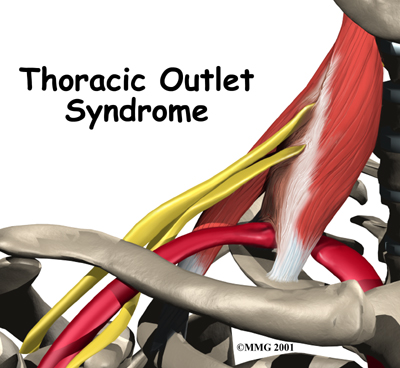Submitted by Dr T on March 15, 2011 – 6:11pm
Answer
It is correct to say that a 50% blockage is not enough to affect the blood flow to your arm – at rest! The question whether this caused by a
atherosclerotic blockage within the artery or by compression on the outside, something sometimes associated with a “thoracic outlet syndrome” which may involve the nerve supply as well as the arterial and/or venous return to and from your arm respectively.
The nerves and vessels travel between muscles in the neck called the scalene muscles and over the top of the rib cage. The thoracic outlet
is this opening between the scalene muscles and the rib cage. The nerves and blood vessels then go under the collarbone (also known as
the clavicle), through the armpit (the axilla), and down the arm to the hand.
CAUSES
The main cause of TOS is that the nerves and blood vessels going to the arm and hand get squeezed near the thoracic outlet. This can occur
for many reasons. Pressure on nerves and vessels can happen in people who have fractured their clavicle. It can also happen in people who
have an extra first rib, although this doesn’t always result in TOS. Extra muscle or scar tissues in the scalene muscles can put extra pressure on the nerves and arteries. Heavy lifting and carrying can bulk up the scalene muscles to the point where the nerve and arteries get squeezed.
SYMPTOMS
TOS causes pain along the top of the clavicle and shoulder. The pain may spread along the inside edge of the arm. Occasionally pain spreads
into the hand, mostly into the ring and pinky fingers. Numbness and tingling, called paresthesia, may accompany the pain, especially in the early hours of the morning before it’s time to wake up.
Symptoms tend to get worse when driving, lifting, carrying, and writing. The arms may also feel tired when held overhead, as when using a blow dryer. It may be harder to hold and grip things, and the hand may feel clumsy.
Symptoms related to the blood vessels are less common. If the blood vessels are causing symptoms, the arm and shoulder may feel heavy and
cold. The arm may become somewhat blue (cyanotic), and the constriction of vessels can cause the arm and hand to swell.
Because TOS doesn’t have any unique symptoms, it can be difficult to diagnose. The diagnosis of TOS involves getting as much information as
possible to eliminate other possible causes of your pain.
First, your doctor will take your medical history and do a thorough physical examination. Because TOS is so difficult to diagnose, your doctor will rely heavily on what you report about your symptoms and medical history.
You may need to get an X-ray. The X-ray could show an extra cervical rib or other problems with the bones and joints, such as arthritis.
Your doctor may also ask you to get an magnetic resonance imaging (MRI) scan or other imaging tests. MRI scans use magnetic waves to show
pictures of the bones and soft tissues of your body in slices. X-rays and other imaging tests are mostly used to rule out other problems.
Your doctor may recommend electrical tests, called electromyography, of the nerves in the arm. These tests are used to find out if the nerves between the neck and hand are being pinched.

To confirm the diagnosis, doctors may do special tests of the blood vessels that run along the nerves. These tests are frequently negative,
but it is important that your doctor rule out other causes of your pain.
TREATMENT
TOS symptoms are similar to the symptoms of many other conditions. A herniated disc in the neck, carpal tunnel syndrome in the hand, and
bursitis of the shoulder can all cause symptoms very much like those of TOS. If surgery is needed, it is directed at removing the source of
compression on the nerves of the brachial plexus. The brachial plexus is the network of nerves that go to the hand and forearm. If there is an extra rib, it is usually removed. Otherwise, surgery consists of simply releasing the constricting elements and scar tissue around the nerves.
Your pain is not typical for that, but do you have numbness in your arm – if so, where?
Hope this helps,
Dr T
https://www.cardiachealth.org/
(From: Thoracic Outlet Syndrome, http://www.orthogate.org/patient-education/shoulder/thoracic-outlet-syndrome.html)

